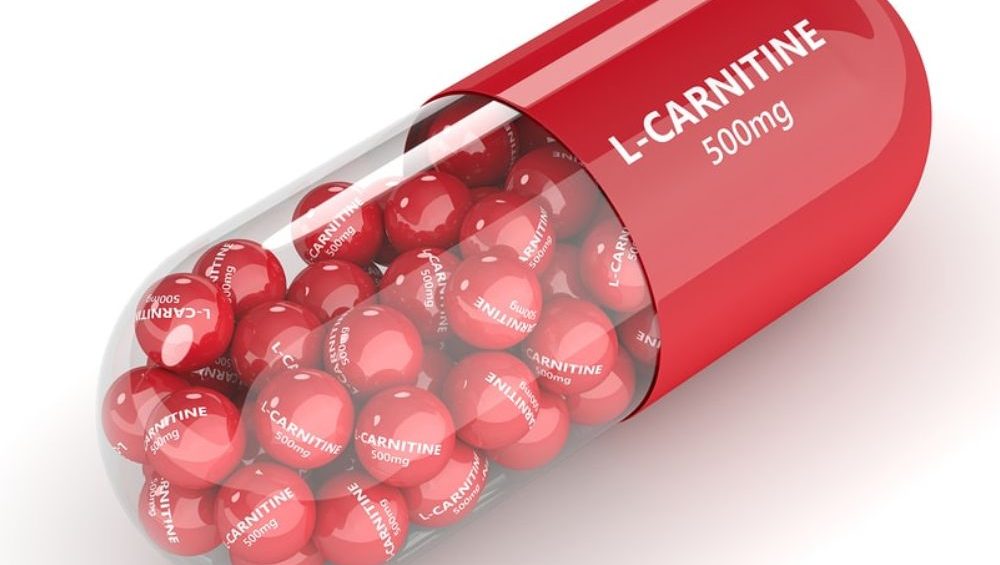Whether or not High Intensity Training (H.I.T.) is safe to practice is one of the most frequently asked questions I hear universally from clients as well as many other fitness enthusiasts.
People often wonder if and how they should try and incorporate H.I.T. into their exercise and fitness routines, and if by doing more sessions or more repetitions of each session if they will be able to achieve faster results.
The recent surge in the sudden popularity of H.I.T. is largely due to a result of the increased publicity and hype regarding the “miraculous” and “immediate” results possible by doing H.I.T. reported by both the Fitness and Fashion industry media as well as the inordinate amount of discussion about H.I.T. across a range of social media outlets portraying H.I.T. as the “total solution” and answer to all of your fitness goals, and hopes and dreams. In other words, there has been a great deal of inaccuracies reported regarding the truth about H.I.T. which, in reality does not enable you to simply obtain your ideal body quickly and cheaply. However, done correctly AND with proper supervision by a professional fitness instruction, H.I.T. can be an effective method of fitness training for you, but it is NOT an overnight or “quick-fix” one-stop solution. It is therefore crucially important to be aware of what H.I.T. is and what it is NOT.
Here are some common myths to help guide you:
Common Myths About H.I.T.
- I.T. will enable you to obtain a “ripped body” quickly and safely.
- I.T. will enable you to push your mind and body to its maximum in a minimal amount of time.
- I.T. allows you to place a low emphasis on nutrition and recovery, as long as you have the will to succeed.
- It is realistic to use professional fitness models to demonstrate how H.I.T. can work for you.
As a practice, H.I.T. has been an integral part of overall sports conditioning training for decades to help athletes increase their strength and performance. Over my 15 year career in training professional athletes and clients worldwide, I would agree that this described kind of H.I.T. is authentic and truly is the “real deal”. Regardless of whether or not you practice H.I.T. as it has been performed historically, or if you choose instead to participate in one of the more recent H.I.T. programs designed and created by fitness professionals, it is vital to consider the following factors in conjunction with a selection of practical exercises according to your particular goals, as follows:
Benefits of High Intensity Training (H.I.T.) Done Properly
When you progress with H.I.T. at a rate appropriate to your initial level of fitness, your body’s energy systems are challenged in such a manner resulting in a post caloric burning effect up to 38 hours it is known among fitness industry as “Exercise Post Oxygen Consumption” (EPOC), or “Afterburn”.
H.I.T. is a time efficient form of exercise and a type of highly intense physical activity which will enable you to achieve double the amount of benefits than other forms of more leisurely forms of regular exercise including a more intense excess post exercise oxygen consumption (EPOC) or post work-out calorie burning effect (commonly known as “after-burn”).
H.I.T. is a more intelligent way to reach your fitness goals, – whether you want to improve your health, reduce weight and/or improve your physical appearance.
H.I.T. provides both an intense physical and mental challenge to your body and mind, – “In mens sana en corpore sano” (A healthy mind in a healthy body)!
Done properly, and under the supervised professional fitness guidance, by practicing H.I.T., physical results are visible in a short period of time.
However, prior to undertaking a serious program of H.I.T., you should only do so under the supervision of a credible and diligent fitness professional. In addition, you should only consider participating in a H.I.T. program that will encompass the following list of health and fitness protocols:
- Health history
- Exercise history and Current Fitness Level/Ability
- Movement ability
- Nutrition intake and dietary planning
- Rest and Recovery
- Exercise programming and progression
- Negative or Positive effect on health & fitness
- Environmental factors (i.e. heat index, impact of exercising at different altitudes)
Genetics, as well as your state of mental and physical health, plays a contributing role in planning your health, fitness and performance goals. For example, personally, I love Basketball and American Football, and would love to imagine myself playing for the Miami Heat or Miami Dolphins since I have the right mind set and mental fortitude, as well as the agility, speed, strength and maintain proper nutrition accordingly. However, the reality is that, I’m too short for Basketball and I don’t have the muscle size to join the NFL, – so “it is what it is”. So instead, the best option for me would be to select a skill related sport, such as Fencing or a weight class sport like Boxing or Mixed Martial Arts (MMA).
Once you come to terms with your goals, challenges, and the realities of your own physical and mental limitations, you can embrace a plan of action for H.I.T. that is right for you. No matter what physical or mental challenges or limitation you may encounter, a structured and supervised H.I.T. program will still enable you to challenge yourself to give your personal best and improve your training every day regardless of your age, gender, or level of fitness!
Since the Internet and social media outlets are often flooded with an overwhelming amount of misinformation, it is a challenge to disseminate all of this information in their efforts to obtain quick and lasting fitness results by naively undertaking a misguided or improperly structured H.I.T. program. However, there is a way to combat this overflow of misinformation by using common sense and understanding that a successful H.I.T. program requires a significant amount of patience to progress and build a solid base of fitness. Conversely, a lack of appreciation for the time it takes to do H.I.T. properly, can decrease your immunity, increase your chances for the onset of injury, lower your metabolism, and increase your negative hormone response (i.e. raise your cortisol levels) due to the mental and physical stress of increased frustration over lack of immediate results.
In addition, it is important to keep in mind that while we might admire the incredible and impressive level of physical fitness of a particular professional athlete, or a fitness model, their results did not happen overnight! These fitness professionals have devoted their careers and their lives to achieving the kind of physical fitness that is generally not realistic for the general population. In fact, it is worth a reminder that these fitness professionals have invested time (AND years), money, dedication, commitment, sacrifice, hard work, clean nutrition and proper recovery with a plan of good fitness.
When training new clients in any H.I.T. program, the pace at which they progress initially depends on their level of fitness and overall health at the commencement of any training program, as well as their mental attitude and commitment to improving their fitness level. As part of my initial fitness assessment process for all of my H.I.T. clients, I begin training in the first phase of training with a gradual progression of exercises such as a combination of the use of bands, cables, personal bodyweight, free weights and medicine balls. Then, I would consider, when appropriate, moving on to the use of punching bags and the use of mitts. This training progression would increase incrementally as fitness improves. These principles apply across the full spectrum of fitness modalities (Cardio, Strength, SAQ, Power, Flexibility and Stability) as well in order to ensure that my clients are guided to achieve their goals and personal bests in a thorough in-depth professional guided manner.
Fad exercises often are characterized by unseemingly inter-connected arbitrary exercises claiming to challenge individuals to burn more calories per minute without providing all relevant information pertaining to specifics calories burned or detailing relevant health risks In addition, often the rationale and justification behind using various protocols (e.g. sprints, Olympic lifts, muscle ups, box jumps in succession) are not provided in any appropriate level of detail to ensure adequate health safety and minimize risk of injury.
In other words, just because an exercise is difficult, it does not mean it is in your best health benefit or fitness interest to perform it nor will it necessarily help you achieve your goals. The key to successful H.I.T. is a full awareness of what H.I.T. should and should not be. With the proper knowledge of H.I.T., comes power, and if done properly, H.I.T. can be an extremely beneficial form of exercise and training.
However, conversely, if you apply H.I.T. protocols on unconditioned individuals (without adequate prior long-term exercise progression), science, application and medical evidence indicates that such highly repetitive and intense exercises can affect your health and fitness in a negative and potentially damaging manner.
If H.I.T. is not done correctly, you may be at risk for some of these alarming negative effects as follows:
- I.T. can decrease metabolism if you don’t plan nutrition, exercise programming and recovery accordingly and under professional supervision.
- I.T. can raise blood pressure and heart rate to a dangerous level and contribute to the onset of cardiovascular (CV) health risks and possible disease.
- I.T. done incorrectly can lead to the overstraining of muscles and joints and possibly lead to further acute or chronic injury.
- I.T. can cause a possible decrease in blood glucose level and thus diminish energy level and impact quality of performance during training.
- I.T. can negatively impact your endocrine system, lowering your immunity and leaving you susceptible to developing coughs, colds, fevers, and other viral and bacterial infections due to lack of appropriate immune and hormonal functions.
- I.T. can also unnecessarily cause exercise induced Asthma and exercise induced Rhabdomyolysis (i.e. when muscle protein leaks into the blood stream and causes acute renal failure, blood clotting, abnormal heart rhythm due to elevation of blood potassium).
Therefore, if you are intent on benefitting from what can be a highly beneficial form of serious exercise, done properly and under adequate supervision, H.I.T. can be highly beneficial. Please keep in mind though, these crucial steps when doing H.I.T. training to ensure you reach your goals in a healthy, progressive and a sustainable way, as follows:
Is the exercise routine comfortable for your body to execute with proper technique?
Consult a trained Fitness professional at each level of fitness progression to help you gauge the appropriate pace and level of progression suited to your fitness level as you advance.
If you do consult a Fitness Trainer, ensure that he or she possesses the appropriate Fitness Industry credentials, background, and experience, in addition to a proven track record of success. When working with a Fitness Trainer, always seek clarification on any exercises, etc. and inform him or her if you experience any pain while exercising. A good trainer not only is happy to answer questions, but also welcomes them, as a sign of sincere commitment!
Adhere to a plan of healthy and adequate eating as much as you take care in following a supervised progressive plan of safe and properly supervised H.I.T. Do not be tempted by lures of offers of “free” or quick fix exercises or diets that promise you instant results, or simply look “cool”. If it sounds too good to be true, it probably is!
Above all be patient, and remember that in order to help you achieve your short and long term health and fitness goals – it will not happen overnight. Once you are engaged in a long term commitment to your health and life fitness, and understand that good health and fitness is a way of living that you must embrace for the rest of your life, with adequate education, training, and knowledge, will come this power, – the power for you to make the best and smartest choices for your health
















